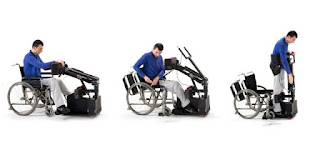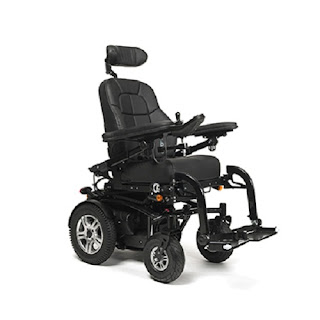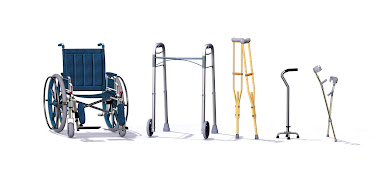Enhancing Comfort and Function: Wheelchairs for Those with Spinal Problems
Living with spinal problems can be challenging, especially when it comes to mobility and independence. For individuals with spinal conditions, finding the right wheelchair is crucial in enhancing both comfort and function.
In this blog post, we will explore the needs of individuals with spinal problems, discuss the importance of choosing the right Best wheelchair NZ, and explore the different types of wheelchairs available.
We understand the difficulties faced by individuals with spinal problems and aim to provide helpful information and resources to make the wheelchair selection process easier.
Understanding the Needs of Individuals with Spinal Problems:
Spinal problems can stem from various conditions, such as spinal cord injuries, degenerative disc disease, or spinal stenosis. These conditions often result in limited mobility and can significantly impact an individual's quality of life. Using a wheelchair becomes necessary to improve mobility, maintain independence, and alleviate pain or discomfort.
Individuals with spinal problems face several challenges in their day-to-day lives. They may have difficulty navigating uneven surfaces or climbing stairs. Maintaining balance and stability can also be a concern. Additionally, individuals may experience discomfort or pain from sitting for prolonged periods. It is essential to understand these specific needs to find a wheelchair NZ that addresses them effectively.
Customised solutions play a vital role in meeting the specific needs of individuals with spinal problems. Each person's condition is unique, and a one-size-fits-all approach may not be suitable. Seeking professional advice from healthcare providers or occupational therapists can help determine the best wheelchair and Best disability equipment NZ options based on individual requirements.
Choosing the Right Wheelchair:
A. Comfort is Key:
When selecting a wheelchair, comfort should be a top priority. Spending long hours in a wheelchair can lead to pressure sores, discomfort, and muscle fatigue. Features such as ergonomic seating, adjustable backrests, cushioning options, and proper weight distribution are crucial in ensuring optimal comfort.
Assessing one's comfort needs involves trying out different wheelchair models, considering factors such as seat width, depth, and height. It is essential to find a wheelchair that provides adequate support for the spine while maintaining comfort and preventing pressure ulcers.
B. Functionality Matters:
Functionality is another critical aspect to consider when choosing a wheelchair. Manoeuvrability, weight capacity, and ease of use disability equipment NZ are essential factors to evaluate. Adjustable footrests, armrests, and control mechanisms can significantly enhance functionality and accommodate individual needs.
Advancements in wheelchair technology have led to innovations such as power-assisted wheels or custom controls tailored to individual requirements. These features can provide greater independence and convenience for individuals with spinal problems.
Types of Wheelchairs for Spinal Problems:
A. Manual Wheelchairs:
Manual wheelchairs are traditional options that provide self-propulsion capabilities. They are suitable for individuals with sufficient upper body strength and mobility. Different types of manual wheelchairs are available, including lightweight models or those designed specifically for sports activities.
Factors such as stability, portability, and customisation options should be considered when selecting a manual wheelchair. Stability is crucial for individuals with spinal problems, as it ensures a safe and comfortable ride. Portable options may be preferred for individuals who travel frequently, while customisation options allow for modifications based on individual needs.
B. Power Wheelchairs:
Power wheelchairs are motorised alternatives suitable for individuals with limited upper body strength or mobility. They offer greater independence and ease of use, as they do not require manual propulsion. Power wheelchairs are ideal for individuals with severe spinal problems or those who have difficulty self-propelling a manual wheelchair.
When choosing a power wheelchair, factors such as battery life, control options, and customisation for comfort play a significant role. Battery life determines the wheelchair's range and should be suitable for individual needs. Control options can vary, including joystick controls, sip-and-puff systems, or headrest controls. Customisation options allow for adjustments such as seat tilt, recline, or leg elevation.
Additional Considerations:
Seeking professional advice from healthcare providers or occupational therapists is essential when selecting a wheelchair. These professionals can assess individual needs and recommend the most suitable options based on specific requirements.
Proper maintenance and regular check-ups are crucial for ensuring wheelchair longevity. Regular maintenance ensures the wheelchair remains safe, functional, and comfortable. Healthcare providers or wheelchair manufacturers can guide maintenance routines and recommended check-up schedules.
Exploring funding options or insurance coverage is also important. Wheelchairs can be expensive, and individuals may be eligible for financial assistance or insurance coverage. Researching available funding options and understanding insurance policies can help individuals secure the necessary resources for wheelchair procurement.
Conclusion:
Enhancing comfort and function in wheelchairs for those with spinal problems is crucial for improving mobility and maintaining independence. By understanding the unique needs of individuals with spinal problems, choosing a wheelchair NZ that prioritises comfort and functionality becomes easier. Whether it's a manual wheelchair or a power wheelchair, customisation options and advancements in technology offer a wide range of choices. Seeking professional advice, proper maintenance, and exploring funding options are additional considerations that can contribute to a successful wheelchair selection process. We hope this blog post has provided valuable insights and resources for individuals with spinal problems, empowering them to find a wheelchair that suits their specific needs.




Comments
Post a Comment